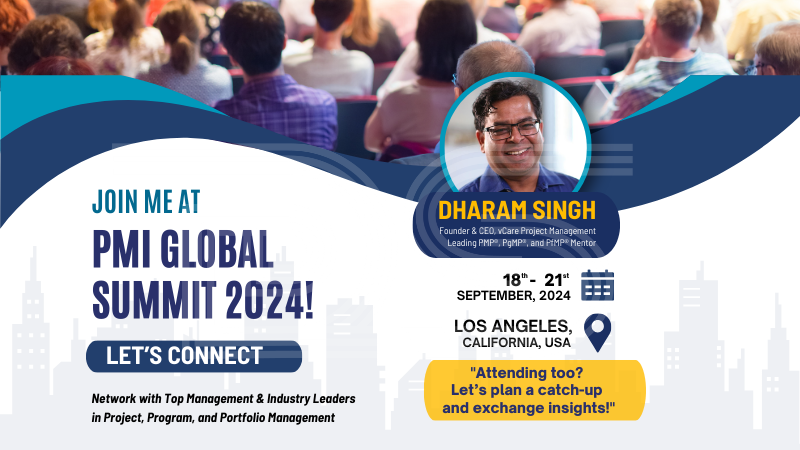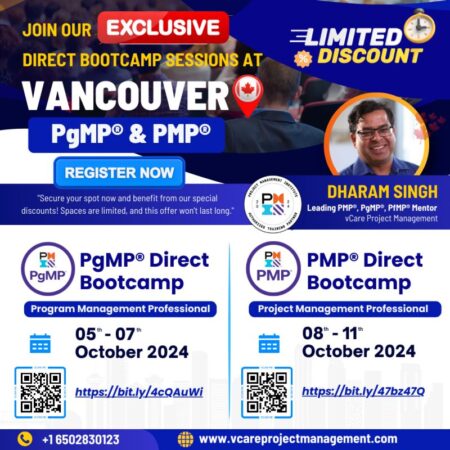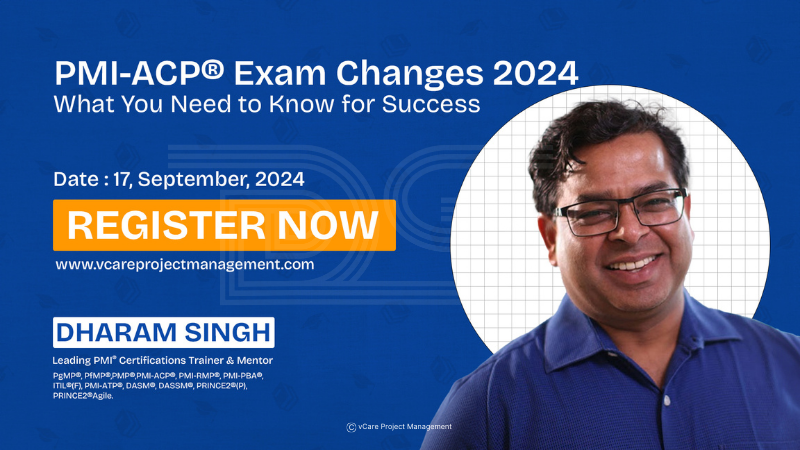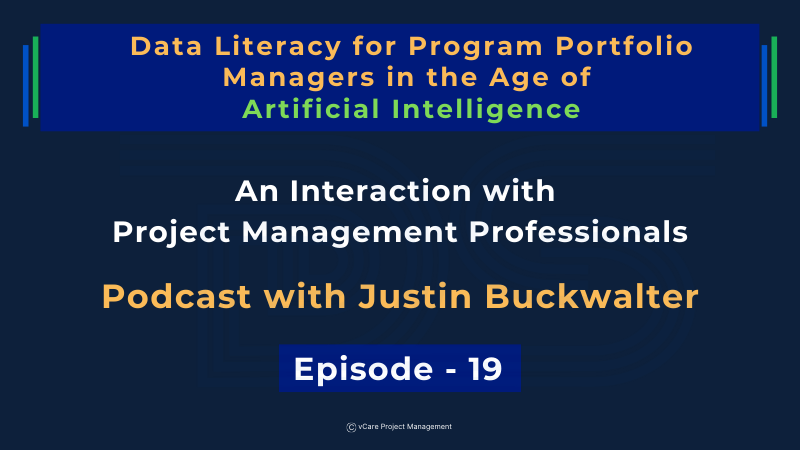
by DharamCW | Sep 20, 2024 | Industry Trends and Insights, Project-Program-Portfolio Management Knowledge
Comfort Zone Assessment
A comfort zone is a behavioral state from which an individual operates, works, or continues his way of life. When we are in our comfort zone, we don’t learn or evolve. Learning gets halted, and we fail to embrace new ideas and concepts. We stop experiencing newer things in life, which might result in losing critical behavior or skills.
Are you stuck in your comfort zone? Assess your current state with these questions to ensure you are continuously learning and growing:
– When was the last time you felt stressed making work decisions?
– When did you last embrace a new challenge?
– Have you recently explored new creative endeavors?
– Are you content with your current activities?
– Do you feel confident and in control of your path?
Reflect on these questions to break free from stagnation and embrace personal and professional growth.
🚀 Elevate Your Project Management Career:
– Register for my upcoming PMI Certification Success Story Webinars: https://bit.ly/4fFJTTn / https://bit.ly/3Mx38kN
– Book an obligation-free consultation session on Project management Career, training, and certifications: http://talktodharam.com
– Discover training offers and certification discounts: https://bit.ly/3jWVepD
– Stay updated with our Q&A series and certification success stories by subscribing to the vCare Project Management YouTube channel at https://bit.ly/2YF0wJl
– Follow my podcasts and interviews with Project Management Experts on YouTube at https://bit.ly/2NDY8wd
#ComfortZone #PersonalDevelopment #GrowthMindset #PersonalGrowth #PgMP #PfMP #PMI #PMP #SelfImprovement #CareerDevelopment #ChallengeYourself #MindsetShift #EmbraceChange #ProfessionalGrowth #PushYourLimits #SelfReflection #StepOutOfComfortZone #NewChallenges #CreativeThinking #AskDharam #DharamSingh #VcareProjectManagement

by DharamCW | Sep 17, 2024 | Industry Trends and Insights
🌍 Exciting News! 🌍
I’m thrilled to announce that I’ll attend the PMI Global Summit 2024 from September 18-21 in Los Angeles, California, USA. This event brings together the best and brightest minds in project, program, and portfolio management. I can’t wait to connect with top management professionals and exchange insights on industry trends.
💼 If you’re attending too, let’s plan a catch-up! It would be a fantastic opportunity to network, share knowledge, and discuss ways to drive success in our projects.
📅 Register now: https://pmiglobalsummit.gcs-web.com/
🎯 BONUS: I’m offering an obligation-free consultation session on Project Management Career, training, and certifications.
👉 Book your session here: http://talktodharam.com
Feel free to drop me a message or comment below if you’re as excited as I am about the summit!
#PMIGlobalSummit #Networking #ProjectManagement #TopManagement #ProfessionalDevelopment #Leadership #IndustryLeaders #CareerGrowth #PMIConference #PortfolioManagement #ProgramManagement #PMIEvents #ProjectLeadership #AskDharam #DharamSingh #VcareProjectManagement

by DharamCW | Sep 16, 2024 | vCare PMI Certification Training Classes
Hello Vancouver professionals! 🌟
Exciting news! I’ll be in Vancouver this October 2024 to lead specialized PgMP and PMP boot camps. 🚀 These intensive training programs will equip you with the knowledge and skills to succeed in program and project management.
Here’s why you don’t want to miss out:
1. Master the required skills to excel in PgMP and PMP exams.
2. Learn from the best who has guided 510+ global PgMP professionals and thousands of PMP professionals across 55 countries.
3. Enhance your resume with coveted PgMP and PMP certifications.
4. Network with like-minded professionals in the project and program management field.
Plus, register early and save! ⏰
1. PgMP Boot camp, Vancouver, Canada – https://bit.ly/4cQAuWi
Date: 5 -7 October 2024
Course Fee: $1999
Early Bird Special: Only $1599 (Register before September 15th and save $400)
2. PMP Boot camp, Vancouver, Canada – https://bit.ly/47bz47Q
Date: 8 – 11 October 2024
Course Fee: $1799
Early Bird Special: Only $1299 (Register before September 15th and save $500)
Register today and take the first step towards a rewarding project and program management career.

Join the PgMP & PMP boot camps in Vancouver this October 2024 and elevate your project management career. Register now!
For more insights into project and program management certifications, training, and career development, book a personalized, obligation-free consultation session with me by visiting talktodharam.com
Take advantage of this opportunity to elevate your career! 🌟
#PgMP #PMP #ProjectManagement #ProgramManagement #Vancouver #vCareProjectManagement #Canada #PMIATP #PMPTraining #PgMPExam #PgMPBootcamp #PMPBootcamp #PgMPCourse #PgMPCertification #PgMPTraining #PMPPgMP #PgMPPreparation #PgMPGuide #PgMPPrep #PMPCertification #PMPExam #PMPCourse #PMPClass #PMPPrep #PMPStudy #AskDharam #DharamSingh #ProgramManager #ProjectManager #PMICertification #DharamSinghPgMP #DharamSinghPfMP #DharamSinghPMP

by DharamCW | Sep 16, 2024 | Professional Development Webinars
PMI-ACP® Exam Changes 2024: What You Need to Know for Success
The PMI-ACP exam is changing on November 8th, 2024, and time is running out to sit for the exam you’ve been preparing for! With additional content and more stringent prerequisites coming soon, delaying may require you to re-study, making the process more challenging.
Are you ready to level up and earn your PMI-ACP® certification? Join our exclusive webinar to learn how you can take the next step and sit for the PMI-ACP exam before the changes take effect.
In this session we will discuss the following:
+ The 2024 PMI-ACP® Exam Update: What’s Changing and What It Means for You
+ Why Now? Maximize Your Opportunity Before PMI-ACP® Changes
+ Actionable Tips for Successfully Clearing PMI-ACP® Certification
+ Interactive Q&A Session
🔗 Reserve your spot now: https://bit.ly/4d535Y9
Session Date: Tuesday, 17th September 2024
Session Time: 09:00 AM – 10:00 AM (PDT) / 10:00 AM – 11:00 AM (MDT) / 11:00 AM – 12:00 PM (CDT) / 12:00 PM – 01:00 PM (EDT) / 01:00 PM – 02:00 PM (BRT) / 05:00 PM – 06:00 PM (BST) / 06:00 PM – 07:00 PM (CEST) / 07:00 PM – 08:00 PM (AST) / 08:00 PM – 09:00 PM (GST) / 09:30 PM – 10:30 PM (IST)
🚀 Elevate Your Agile Project Management Career:
– Book an obligation-free consultation session on Agile Project Management Career, training, and certifications: http://talktodharam.com
– Discover training offers and certification discounts: https://bit.ly/3jWVepD
– Stay updated with our Q&A series and certification success stories by subscribing to the vCare Project Management YouTube channel at https://bit.ly/2YF0wJl
– Follow my podcasts and interviews with Project Management Experts on YouTube at https://bit.ly/2NDY8wd
#PMIACP #ACPExamPrep #PMIACPExam #PMI #AgileCertification #ACPWebinar #AgilePMI #ProjectManagement #PMIACPExamUpdate #AgileTransformation #ScrumMaster #LeanAgile #AgileLeadership #CertifiedAgilePractitioner #ACPExamUpdate #PMIACPTraining #ACPTraining #AskDharam #DharamSingh #VcareProjectManagement #AgileCertifiedPractitioner

by DharamCW | Sep 13, 2024 | Podcast, Project-Program-Portfolio Management Knowledge
Data Literacy for Program Portfolio Managers in the Age of Artificial Intelligence | Episode 19 | Justin Buckwalter
🔍 Key Takeaways:
– Why has “Data Literacy” become an unspoken prerequisite for business success in the AI-driven era? As a Project/Program Leader, why should you care?
– Why do data governance and data literacy go hand-in-hand?
– How do you measure the success or impact of the initiatives to foster a data culture within the organization? Are there specific KPIs you use to evaluate employee data literacy improvement?
– Given the importance of data sharing and collaboration, how do you balance promoting collaboration while ensuring the security and privacy of sensitive government data in a large-scale Public Private Partnership (PPP) program?
– What familiar challenges are encountered in promoting data literacy within an organization, and what strategies have been most effective in overcoming these challenges?
– How can you create a data-driven culture in your organization to ensure it starts to grow within data literacy and progresses with the data revolution?
– What immediate and long-term strategies should our company employ to navigate the significant impact of generative AI on efficiency, competitiveness, and business model adaptation?
– Which data literacy skills or competencies are essential for Program/Portfolio Managers to enhance their adept handling of intricate datasets for informed decision-making and problem-solving?
– “The more things change, the more they stay the same.” As a Program Manager, do you anticipate drastic changes in AI transformation in organizations?
🎥 Watch now: https://www.youtube.com/watch?v=iUMrtsiphmY
🚀 Seize the opportunity to Elevate Your Project Management Career:
– Register for my upcoming PMI Certification Success Story Webinar: https://bit.ly/4fFJTTn
– Book an obligation-free consultation session on Project management Career, training, and certifications: http://talktodharam.com
– Discover training offers and certification discounts: https://bit.ly/3jWVepD
– Stay updated with our Q&A series and certification success stories by subscribing to the vCare Project Management YouTube channel at https://bit.ly/2YF0wJl
– Follow my podcasts and interviews with Project Management Experts on YouTube at https://bit.ly/2NDY8wd
#DataLiteracy #ProgramManager #PortfolioManager #ProjectManager #AIDrivenEra #DataGovernance #DataCulture #DataLiteracyKPIs #DataSecurity #PgMP #PfMP #PMP #PublicPrivatePartnership #DataDrivenCulture #GenerativeAI #DataCompetencies #DataTransformation #AIIntegration #DataCollaboration #BusinessIntelligence #ProgramManagement #ProjectManagement #PortfolioManagement #PMICertification #AskDharam #DharamSingh #VcareProjectManagement









Recent Comments